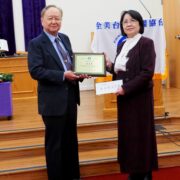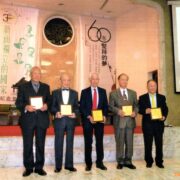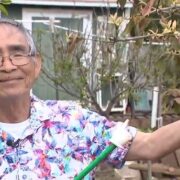The Formosan Association for Human Rights – From Beginning to Present
Author: Tina Chang
During the Taiwanese movement, the work I was most committed to was rescuing political prisoners in Taiwan and protecting people’s human rights. When Taiwan was put under martial law, everyone avoided political prisoners and their families the most. No one dared to try and rescue them, for fear that they might fall into trouble themselves. The Kuomintang made propagandistic claims to the outside world, saying, “Taiwan is a free, democratic country, with no political prisoners,” so the most important work needed to break through these claims was the collection of data. In the early years, the only people who were willing to take the risk of collecting the names of political prisoners to send overseas were Dr. Tien Chao-ming and Joyce Chen.
In 1976, I gathered twelve Taiwanese women in New York and established the first Taiwanese human rights organization in the United States – The North American Formosan Association for Human Rights. Through the association, we began to have organized contact with the international media, various human rights organizations, church groups, and the U.S. Congress. Over time, they slowly understood more about Taiwan’s grave human rights violation issue, which they started to take more seriously. In 1978, the Formosan Association for Human Rights helped bring famous American Human Rights lawyer, Leonard Weinglass (雷諾維恩), to Taiwan to investigate. The year after that, the Formosa Incident occurred, and the Formosan Association for Human Rights mobilized Taiwanese people from around the States to write letters to members of Congress. The number of letters received by Senator Ted Kennedy’s office set the highest record in history. He was very moved by this, and thus became more devoted to issues in Taiwan. Apart from this, I also contacted American political, educational, and church organizations to create a delegation, led by Attorney General Ramsey Clark, to visit Taiwan to observe the Formosa Incident Trial. When Clark and the delegation returned to the United States, they immediately held a press conference at the UN Building and announced to the entire world: “In the Formosa Incident Trial, it is the Taiwanese government that stands accused.” Because of the strong overseas reaction, the Kuomintang had no other option than to make what had called a “public trial” for appearance’s sake, into a real public trial. The ideals and heroic courage of the Formosa Incident victims is historically significant and should serve as political education for the citizens of Taiwan.
Introduction:
Formosan Association for Human Rights
Since in the early 1960s, overseas Taiwanese have been involved in rescuing political prisoners in Taiwan, caring for victims’ families, and organizing resistance against the Kuomintang’s human rights violations. During those early years, they resisted by gathering in the streets whenever there were instances of political persecution or human rights violations. After many years of experience, they began to feel that in order to effectively combat the Kuomintang and get results, they needed to organize our activities and apply international pressure on the Kuomintang.
In 1976, Tina Chang collaborated with over ten people, including members of the local New York organization, United Formosans for Independence, and other passionate women like Hui-mei Tai, Li-chan Lin, and Chien-ho Lin to establish the Committee for Taiwan Human Rights. Tina Chang was in charge coordinating and executing the organization’s tasks. James Symour, a Colombia professor with human rights work experience and a grand vision, suggested that the committee change its name to the Formosan Association for Human Rights. And thus, the Formosan Association for Human Rights was born.
That same year, there was a group of Taiwanese in Los Angeles, California, who were passionate about Taiwanese human rights; this group, which included Kai-shih Hsu, Chien-hui Hsu, Ching-chiang Kuo, Chi-shih Chang, Teh-ho Cheng, and Ting Yee Wang formed
The Taiwan Human Rights & Culture Association. Since the two groups had the same mission and goals, they agreed to work together under the umbrella of the Formosan Association for Human Rights, promoting cooperation on human rights advocacy work.
2014 Formosan Association for Human Rights President: H. L. Hung, Vice-President: Michael Yeun, Secretary: Ching-huang Tsai, Finance: Tony Lee, Directors: Ting Yee Wang, Henry Lee, H. L. Hung, Sheow-Hwey Chang, Shu-pin Chuan, Tony Lee, Ken S. Huang, Ching-huang Tsai, Pi-hui Chen, Michael Yeun, Yu-yuan Hsiao, Tzu-hui Chen, Chun-Yung Lin, Tai Lin, Edward J. S. Lin.
Sourced from Tina Chang’s Story, 2000.
Translated from 75. 台灣人權協會的開始與現況 / 張丁蘭 / 2014/12





